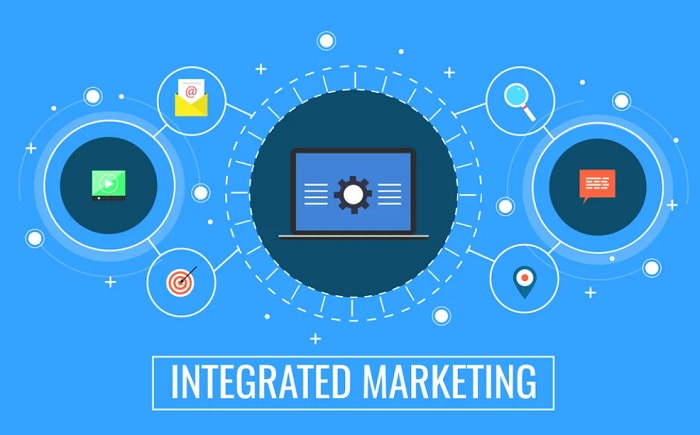Integrated marketing communication has become increasingly important in the modern business environment. It is a process by which businesses create and manage many things. These include advertisements, promotions, and other messaging to ensure that all of their communications are coherent and successful.
Integrated Marketing Communication (IMC) is a strategic approach that combines all the promotional tools and communication channels to deliver a consistent and unified message to the target audience. It ensures that all marketing communications are coordinated and work together to achieve the organization’s marketing objectives.
You must be yearning for more information, so keep reading to know more!
What is Integrated Marketing Communication?
Organizations apply the strategic business process known as integrated marketing communication (IMC). This approach allows businesses to reach their target consumers and market their goods or services more successfully. The method of IMC involves combining multiple marketing tactics into a cohesive strategy. This allows businesses to maximize the effectiveness of their message and reach as many potential customers as possible.
At its core, IMC seeks to create a unified image for an organization’s brand across all communication platforms. This includes traditional media such as television advertisements and print media. Also, it has digital mediums such as website design and social media campaigns. Organizations that employ the process of IMC strive to send consistent messages about their product or service. This consistency is spread across all channels to generate maximum awareness among consumers.
One of the key advantages of using IMC is its ability to maximize the return on investment for each dollar spent on marketing initiatives. IMC is used in the business-to-business sector, as well.
Step 1: Establishing Goals
IMC allows businesses to tailor their message to the right audience, build customer trust, and increase brand awareness.
The integrated marketing communication process starts with establishing goals for your organization or project. Goals need to be measurable and achievable to hold yourself accountable for success. Plans also have to stay consistent as you move forward in the process. Without clear objectives, advertising and messaging efforts can easily get lost in the din of conflicting demands. Setting your goals gives you a direction that will help you stay focused on what matters most. All while building momentum towards achieving your desired results.
Step 2: Defining Target Audience
Step two in this process is defining the target audience, which can take time for marketers to accomplish.
To define the target audience, marketers must create detailed buyer personas and use available research to understand their customers’ interests, needs, and wants. This information should include demographic data such as age, gender, and location, as well as psychographic data such as personality traits or lifestyle preferences. Marketers should consider customer experience with the product or service they offer to understand their target market better and create content tailored specifically for them.
When creating strategies for integrated marketing communication within their business, marketers must identify their ideal customers, and marketers should do so by considering all aspects of who they are targeting.
Step 3: Crafting The Message
Step three of integrated marketing communication (IMC) is crafting the message. It would be best if you decided what you want to communicate at this point. Also, it would help if you clearly defined how to share it. Consider your target audience so that you may modify your message appropriately. When crafting the message, consider which channels will be most effective for your intended audience to receive it. This could include using traditional media such as newspapers and television, and it could also include digital media such as social networks and websites.
When potential customers land on your website or contact your brand through social media, they may have certain expectations. Expectations about the way you’ll communicate with them, the language you will use, and the type of content they’ll receive. Thus, creating a unique and compelling message requires careful thought. The goal should be to create something that stands out among other messages for your target audience to pay attention to and take action. Finally, remember that originality, emotion, relevance, correctness, consistency, and clarity are the essential components of a compelling message.
Step 4: Selecting Media Channels
Integrated marketing communication (IMC) is a strategic marketing approach combining multiple media forms, including print, digital, and broadcast, to create a unified message for customers. Every step in the IMC process is essential for creating an effective campaign. And this step to select media channels for your news is no exception.
Understanding your target market’s preferences is crucial when choosing media channels for your integrated marketing plan. Consider which channels are most likely to be seen or heard by your potential customers. Are they active online users? Do they watch television? Do they read newspapers and magazines? Understanding these details can help you narrow the list of potential media outlets and decide which will best reach your target audience.
Step 5: Reviewing The Findings
Analyzing the outcomes is the last phase in this procedure. Analyze your campaigns to evaluate their effectiveness and inform future marketing strategies. It would help if you also determined the media outlets most effectively reaching your target audience. Measuring success metrics must be established so that results can be accurately evaluated. As a result, you ought to analyze the conclusion of the campaign.
Analyzing IMC results involves collecting data from each channel used in your campaigns, such as web analytics for digital campaigns and survey data for more traditional campaigns. You may then determine whether your campaign succeeded in attaining its aims by comparing this data with the set objectives. Data should also be analyzed to reveal emerging trends that may help shape future marketing plans.
FAQs
What are the benefits of using IMC?
IMC enables greater alignment between various components of the promotional mix, which is one of its main advantages. Developing and presenting a consistent message across numerous media platforms, businesses have more control over how consumers perceive their brand. Additionally, IMC assists companies in ensuring consistency so that they convey the same message to clients regardless of the channel or touchpoint they utilize. Increasing trust and fostering long-term client relationships with the company.
What is the IMC process?
The first step in integrated marketing communication is setting objectives for the campaign. This includes defining the target audience, determining budget allocations, and deciding which channels should be used for each message. The next step is creating content that engages your target audience, such as brochures, websites, or videos. After the range has been completed, it needs to be distributed across different channels, including print media, digital media, and social media platforms like Facebook or Twitter.
Conclusion: The Benefits Of IMC
The integrated marketing communication (IMC) process is crucial for marketing experts and business owners to get the most out of their campaigns. IMC controls the uniform execution of all marketing initiatives. Creating a cogent message and then disseminating it through a range of venues and channels is essential to reach clients.
IMC’s initial stage is deciding on the campaign’s goal and identifying the intended audience. This makes it possible for marketers to choose the best media platforms and develop a message that appeals to their target audience. The second phase is formulating a plan, allocating funds, and establishing deadlines for each campaign component. Thirdly, it’s crucial to pick tools that can effectively convey your message, such as websites, email newsletters, social media postings, etc. In order to accurately assess results following the campaign, it is lastly important to define the performance measurement metrics.








